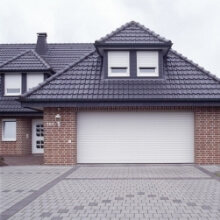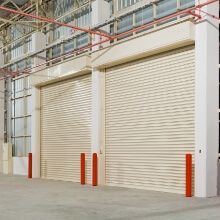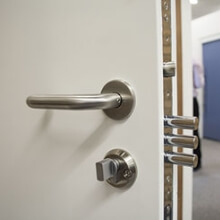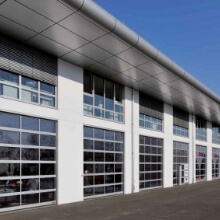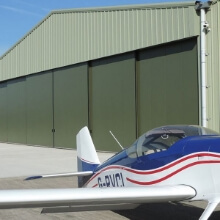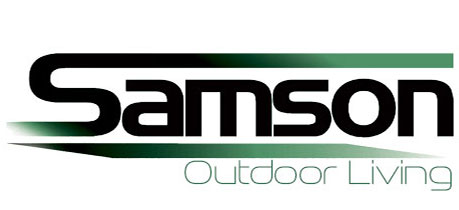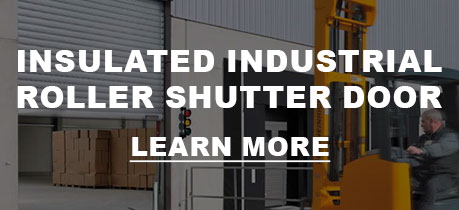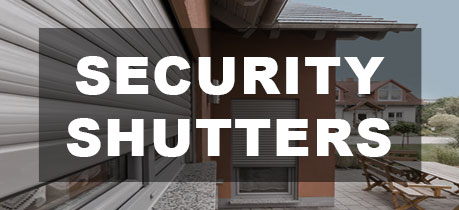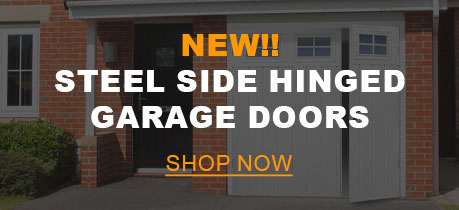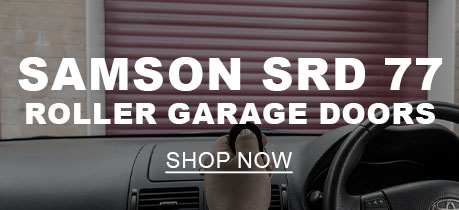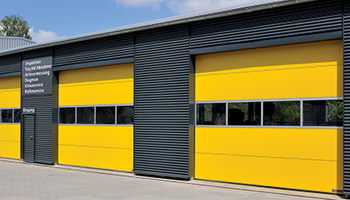The answer to your selected question is shown below.
Please use the Search tool or the menus on the right to find and select more questions and answers.
If you think our response isnt clear, it would be very helpful if you could
contact us
with the issue so that we can improve this section of our web-site.
Choosing a Sectional Overhead Door
A secional overhead door is often the only way to truly gain proper insulation and other features not really possible with basic industrial doors.
Before deciding, ask some of the questions below and see if you have the answers lined up.....

Door Application
What is the door to be used for? (Loading bay, general daily access to building, showroom entrance, etc…)
The purpose of the sectional door needs to be totally clear to ensure the correct specification. Most sectional doors are only used on the outside of any building so they all have very good wind ratings as standard. All sectional doors are insulated as standard, there are simply various levels of insulation values depending on your requirments.
Approximate number of operations per day? (Up to 20 times, or over 20 times a day?)
If the door is manually operated then this isn’t such an issue, but if the sectional door is to be electrically operated then the number of operations per hour or day will decide on the best motor drive system to use. Single phase motors will never have the power or ability of a 3 phase motor to operate many times an hour. An underground car park sectional door for example may require as near to a 100% rated motor as possible for 24 hour use.
Single or multi user ability? (Underground car park multi user, factory - any user who is staff, etc..)
For any sectional overhead door in a multi-user application, thought has to be given to overall control and safety of the door. For any motorised door in a public place safety is the key concern. If the door is to installed for a single user in a private property, then the control is obviously very limited.
Does the door need any particular attributes? (i.e. high insulation, security, vision, speed, acoustic rating, etc).
Nearly all sectional doors can offer better strength and insulation with the double skinned panel construction. Insulation, acoustic ratings and stronger, higher security are all the obvious benefits of an insulated, double-skinned steel panel.
There are many partially or fully-glazed sectional door models now available for use in retail environments, providing high vision and natural light transmission. Modern motor drives can also offer a higher speed operation which is likely to be of benefit to most applications where the door is higher than around 3 metres.
Secured by Design ratings are now readily available on certain sectional door models sold by Samson Doors, so if security is important then this will require some discussion.
Door Access Control? How is the door to be controlled from the inside and outside, and maybe anywhere else including third party equipment controls?
Modern control panels give the opportunity for many various control methods to be used on any sectional type door with a motor. Standard controls are usually a push button on the inside wall, but then you can go onto keypads, keyswitches, card readers, radar detectors, ground induction loops, radio control, and so on… Just make sure that if you are not sure, the control panel used can take enhancements at a later date if necessary.
Does the door need to be operational even in a power cut?
All sectional doors have a manual override as they are a spring balanced door in the first place. In the event of a power failure, the motor drive can be released and the door raised and lowered by either a chain or a rope pulley system.
It is always sensible to have a manual locking system ready for use on any sectional door, and to be used for double locking at night perhaps too.
Site Installation
1. Is it a Replacement or New Build installation?
For a new build it may be far easier to ensure the guide channels are in place, or the aperture has the correct headroom and side room to accommodate the sectional door mechanism and motor drive. For a replacement door, there may be a requirement for additional work if the existing door is not a sectional type door as there are far more fixture points required for the vertical and horizontal tracking.
Installation times can vary massively when the door is a replacement and the existing door needs removal and disposing from site.
2. What is the structural opening construction? (i.e. Steel, block, brick, etc)
An obvious point to consider with the ever-increasing use of lightweight building blocks in construction. Is there sufficient strength in the construction for a sectional door?
Unlike a roller shutter door, the weight is quite evenly spread with a sectional door.
3. Where are the door, motor and guides going to be best installed? (Inside or in-between the structural opening)
A sectional overhead door is normally always installed the the inside face of any opening as the door panels are then clear of the aperture. As a result, this provides a full opening to use whilst the panels are behind the aperture, providing a thermal break and the best seal possible at the sides.
When installed in-between the aperture you will obviously lose side and headroom permanently so be aware of these lost dimensions. A steel framework is often required for installation in-between an aperture to ensure a safe and stable fixture for the tracking and spring system at the top.
4. Is the opening completely finished or yet to be built? (Work from drawings or survey required at some point)
Are the dimensions being taken for the drawings for the building and is everyone happy to rely on these dimensions for manufacturing? If there is any doubt at all then either the customer/contractor or Samson Doors has to commit to some site survey dimensions and this needs to be 100% clear to all.
5. Site location? – Easy access, parking, etc? (Postcode and details on access)
London is one of the worst location in regards to access in so many places. Parking may be impossible or far away, the access may be very restricted by road width or access to the building, particularly if round the back, and the worst scenario is any installation not on the ground floor. Be sure to establish these facts before installation and that delivery costs are provided.
6. Is the site exposed to high winds?
A greater consideration in the 21st century it seems as high winds can come out of nowhere unexpectedly. All external doors purchased and installed should have a certified wind rating, and this needs attention if the site is identified as a high wind and riskier area. Sectional doors will have a siginificantly higher wind rating than most other doors so this is a minimal risk unless in a very exposed, maybe coastal location.
7. Is the sectional door next to a public/pedestrian area? (May require additional safety features?
Any electric operated door in a public area must meet some stringent safety standards, and this is discussed from details of the site layout and proximity to general public.
8. Are there any hazardous environmental issues inside or outside the building? (Extreme heat, cold, dust, salt air by the sea, etc..)
Any exceptional conditions inside or outside the building need identifying before specifying the right door and motor. Extreme temperatures need special motor drives, coastal locations need special coatings and components to deal with salt in the atmosphere and so on.
9. Provision of electric feed?
Often overlooked, but consider where and who is providing the electrical feed and what exactly is expected at the termination point? This all depends on the door motor drive specified.
10. Timescales?
Some of the more specialised sectional doors may require up to 8 weeks for manufacturing, so this needs to be checked if critical. Most sectional doors are obtained within 3-4 weeks and are all made to order within this timescale.




